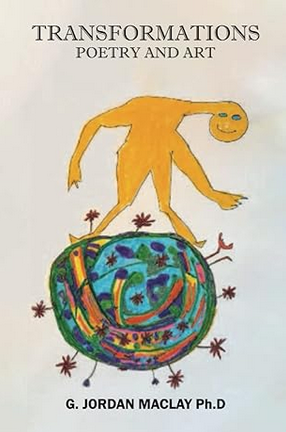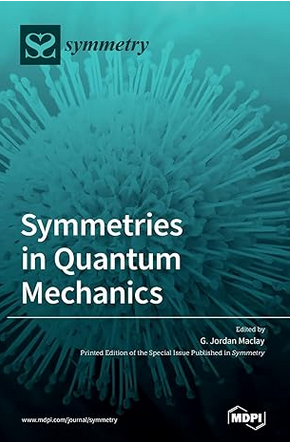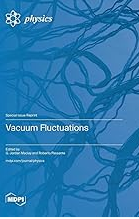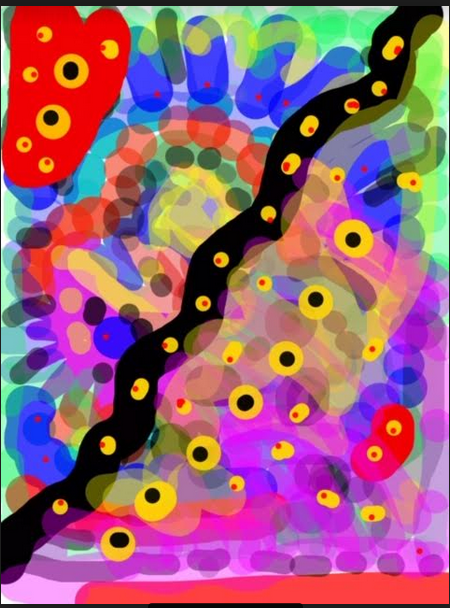
Quantum Fields LLC
L e a d e r s i n B r e a k t h r o u g h T e c h n o l o g i e s
M I S S I O N Our mission is to investigate fundamental phenomena predicted by quantum physics, particularly those related to quantum vacuum fluctuations, and to utilize phenomena of quantum physics with enabling technologies to develop revolutionary approaches that can meet engineering objectives.
Quantum Fields is a small business established in 1999 to do contract research and development with an emphasis on quantum fluctuation phenomena and related areas. Over the last 20 years we have done collaborative research with Rainer Weiss, Peter Milonni, Yakir Ahaaranov, David Wineland, Jeeva Anandan, Eric Davis, Erick Black, Robert Forward, Lowell Brown, Larry Ford, Marc Millis and others.
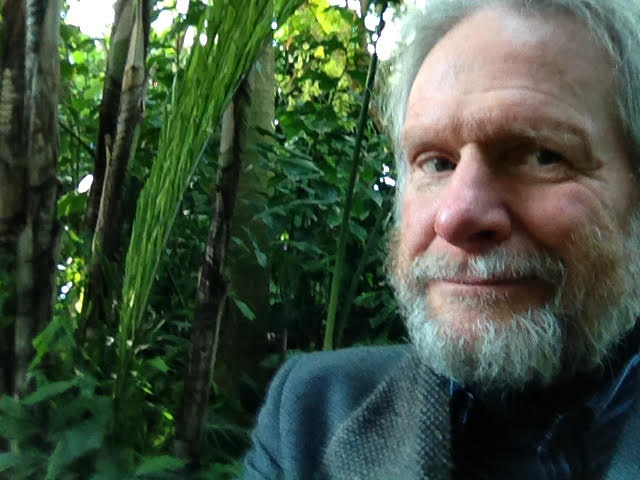
Professor Maclay has authored over 100 articles in the areas of quantum physics, chemical sensors, and molecular spectroscopy. He has 16 patents.
Prof. Maclay received his Ph.D. in quantum field theory from Yale University in 1972. Prof. Maclay’s thesis was a QED computation of the Lamb shift in the hydrogen atom using methods of group theory. The Lamb shift is the celebrated shift in energy levels due to the interaction of the atom with the zero-point electromagnetic field. The discovery of the Lamb shift led to the modern formulation of QED and the importance of the quantum vacuum. Prof. Lamb was Prof. Maclay’s quantum mechanics professor at Yale.
He held a Post-Doctoral Appointment at Argonne National, where he was a member of an experimental team in particle physics. He worked on the first experiments at Fermi National Laboratory. After working in industry on new product development, he joined the Department of Electrical Engineering and Computer Science at University of Illinois at Chicago in 1978, where he taught and did research for almost 20 years. His average annual research support was about $300,000. Much of the support was industrial with focused objectives and functioning deliverables
He was the founder and Director of the Microelectronics Laboratory at University of Illinois at Chicago. In 1985 with $900,000 support from an Illinois Technology Challenge Grant for which Prof. Maclay was the PI, this laboratory grew into the Microfabrication Applications Laboratory, a regional center offering MEMS resources to industry. His research was in the area of microfabrication technology, chemical microsensors, micromachined structures and solid state physics. In 1991, Prof. Maclay received the American Electronics Association award of Science and Technology Advocate of the Year. In 1988 he was Visiting Scientist at the Fraunhofer Institute for Circuits and Systems. When Prof. Maclay retired from University of Illinois in 1998, he was given Emeritus status. In 1999, he started Quantum Fields LLC with his wife Mary Maclay.
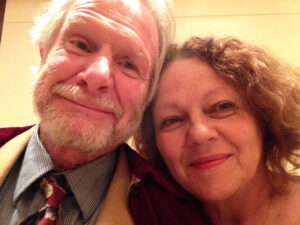
Prof. Maclay wrote his first paper on Casimir effect with Prof. Lowell S. Brown, his Ph.D. advisor, in 1969, while still a graduate student. (Prof. Brown was later Editor of Physical Review D), Vacuum Stress between Conducting Plates: An Image Solution, Phys. Rev. 184 1272 (1969). This seminal paper has over 700 citations. E. Elizaide and A. Romero, in their review article “Details of the Casimir Effect and its computations,” America Journal of Physics, 59, 8, pp. 711-719(1991),state: ” The paper by L.S. Brown and G.J. Maclay, published 21 years after the work of Casimir, was especially significant from a theoretical point of view, a kind of milestone on the road leading to the modern Quantum Field Theory interpretation of the Casimir effect. For the first time, it contains the local interpretation of the Casimir effect, in terms of vacuum energy and vacuum pressure…for the first time the calculation involved the Zeta function procedure…which has evolved into the most elegant, simple, mathematically rigorous way of defining regularized vacuum energy densities in situations that nowadays very much generalize the original case conducted by Casimir.”
One of Prof. Maclay’s research efforts at UIC was the application of silicon micromachining methods to investigate vacuum fluctuation effects, such as Casimir forces. He published, with his students and collaborators: 1. The first model of a dynamic mechanical system with Casimir Force: The Anharmonic Casimir Oscillator (ACO)-The Casimir effect in a Model Microelectronic System, J. Microelectromechanical Sys 4, 193(1995; 2. The first theoretical and and experimenal descriptions of microfabricated beams and surfaces bent by Casimir forces in MEMS: The Role of the Casimir Effect in the state deflection and stiction of membrane strips in microelectromechanical systems (MEMS), J. APP. Phys. 84, 2501(1998). In the major review book on the Casimir effect by Bordag, Klimchitskaya, Mohideen, and Mostepanenko, Advances in the Casimir Effect, Oxford Univ Press, New York (2009) the authors say: “Importantly, the paper on the ACO drew the attention of the MEMS community to the fact that the Casimir effect needs to be considered as a vital factor in the future design of MEMS. The results obtained served as a starting point for future developments of applications of the Casimir effect in MEMS systems.” Today this is a thriving field with much research. Before receiving his PhD, Prof. Maclay was involved in research in molecular spectroscopy.
R E S E A R C H – Q U A N T U M – F L U C T U A T I O N S
Articles in the Popular Press
“Life and signs of the Casimir effect” by G.J. Maclay and Peter Milonni, Physics Today, 74, 8, 11 (2021)
“Enchanted by a Tiny Swimmer” by G.J. Maclay, Physics Today, September 2019, page 22, 8/11/2020.
“Quantum Starship hits the slow lane” by M. Chow, New Scientist Magazine, pp 20-21, 5/24/2003. Based on our article about a spacecraft that accelerates by pushing on the vacuum, and extracting energy from the vacuum to operate.
“Space at Warp Speed” by Mariette DiChristina, Popular Science, pp46-51, 5/2001. About NASA Breakthrough Propulsion Program, and our role in it.
“Energy Unlimited,” by Henry Bortman for New Scientist Magazine, pp32-34, 1/22/2000. Feature article on our vacuum energy project using MEMS devices to measure vacuum energy.
“Cavities of Photonic Lasers Resonate with Purcell’s Dictum” by G.J. Maclay, Physics Today, November 1999, page 81 11/1/1999.
ZPV Background by Jordan Maclay, Quantum Fields LLC. Some general ideas on vacuum energy.
R E V I E W S – B Y – O U R – P E E R S
In 1995 and 1998 Prof. Maclay and his students published the first models of a microelectromechanical system (MEMS) with Casimir forces. In their extensive and authoritative review book “Advances in the Casimir Effect,” Oxford University Press, 2009, authors Bordag, Klimchitskaya, Mohideen, and Mostepanenko state that these papers [#15, #16 below] “drew the attention of the MEMS community to the fact that the Casimir effect needs to be considered as a vital factor in the future design of MEMS. The results obtained served as a starting point for future developments of applications of the Casimir effect in MEMS systems… It was revealed that the Casimir effect might be the critical factor in the stiction failure of MEMS.”
In their review article entitled “Details of the Casimir Effect and its computation,” American Journal of Physics, 59, 8, pp. 711-719(1991), authors E. Elizaide and A. Romero state: ” The paper [#14 below] by L.S. Brown and G. J. Maclay, published 21 years after the work of Casimir, was especially significant from a theoretical point of view, a kind of milestone on the road leading to the modern Quantum Field Theory interpretation of the Casimir effect. For the first time, it contains the local interpretation of the Casimir effect, in terms of vacuum energy and vacuum pressure…for the first time the calculation involved the Zeta function procedure…which has evolved into the most elegant, simple, and mathematically rigorous way of defining regularized vacuum energy densities in situations that nowadays very much generalize the original case considered by Casimir.”
S C I E N T I F I C – A R T I C L E S
Publications about vacuum energy, vacuum fluctuations or zero point energy, Casimir forces
28. “Is the H Atom Surrounded by A Cloud of Virtual Quanta Due to the Lamb Shift?” Physics 2023, 5(3), 883-894; https://doi.org/10.3390/physics5030057 Maclay, G.J. The H atom is surrounded by a field of virtual positive energy due to the Lamb shift. The atom scatters the zero-point fluctuations, creating a field that extends well beyond the atom for fluctuation energies below several eV. For a fluctuation with energy below about 1 eV and wavelength λ, the radius of the field is about (α/2π)λ, where α is the fine structure constant, consequently the cloud extends for dimensions thousands of times larger than the Bohr orbit. The energy density of the cloud is compared to the free field energy density for zero-point fluctuations.
27. “New Insights into the Lamb Shift: The Spectral Density of the Shift.” Physics 2022, 4, 1253-1277. https://doi.org/10.3390/physics4040081 Maclay, G.J. This paper introduces the idea of a spectral shift density: the integral over the shift density with respect to frequency gives the Lamb shift. The spectral shift density shows what frequency (or energy) vacuum fluctuations contribute to the ground state Lamb shift. Using our group theoretical result of the Lamb shift, we develop an analytic expression for the spectral shift density. The greatest contributions to the Lamb shift per eV are from the lowest energy fluctuations, below 10 eV. Above 100 eV, the shift density is proportional to 1/energy.
26. “Dynamical Symmetries of the H Atom, One of the Most Important Tools of Modern Physics: SO(4) to SO(4,2), Background, Theory, and Use in Calculating Radiative Shifts,” G.J. Maclay, Symmetry 2020, 12(8), 1323; doi: 10.3390/sym12081323
Understanding the hydrogen atom has been at the heart of modern physics. Exploring the symmetry of the most fundamental two body system has led to advances in atomic physics, quantum mechanics, quantum electrodynamics, and elementary particle physics. In this pedagogic review, we present the history of and an integrated treatment of the symmetries of the Schrodinger hydrogen atom, including the classical atom, the SO(4) degeneracy group, the non-invariance group or spectrum generating group SO(4,1), and the expanded group SO(4,2). We give a unified treatment of the bound and continuum states in terms of eigenfunctions that have the same quantum numbers as the ordinary bound states. By using SO(4,2) methods, we are able to obtain a generating function for the radiative shift for all levels. Students, non-experts, and the new generation of scientists may find the clearer, integrated presentation of the symmetries of the hydrogen atom helpful and illuminating. Experts will find new perspectives, even some surprises. (This article belongs to the Special Issue Symmetries in Quantum Mechanics)
25. “History and Some Aspects of the Lamb Shift,” G.J. Maclay, Physics 2020, 2, 105-149. doi: 10.3390/physics2020008
Radiation is a process common to classical and quantum systems with very different effects in each regime. In a quantum system, the interaction of a bound electron with its own radiation field leads to complex shifts in the energy levels of the electron, with the real part of the shift corresponding to a shift in the energy level and the imaginary part to the width of the energy level. The most celebrated radiative shift is the Lamb shift between the 2s1/2 and the 2p1/2 levels of the hydrogen atom. The measurement of this shift in 1947 by Willis Lamb Jr. proved that the predictions by Dirac theory that the energy levels were degenerate was incorrect. Hans Beth’s calculation of the shift showed how to deal with the divergences plaguing the existing theories and led to the development of modern quantum electrodynamics (QED). This historical edagogic paper explores the history of Bethe’s calculation and its significance. It explores radiative effects in classical and quantum systems from different perspectives, with the emphasis on understanding the fundamental physical phenomena. Illustration are drawn from systems with central forces, the H atom, and the three-dimensional harmonic oscillator. A first-order QED calculation of the complex radiative shift for a spinless electron is explored using the equations of motion and the mass2 operator, describing the fundamental phenomena involved, and relating the results to Feynman diagrams. (This article belongs to the Special Issue The Quantum Vacuum)
24. “The Role of Vacuum Fluctuations and Symmetry in the Hydrogen Atom in Quantum Mechanics and Stochastic Electrodynamics,” G.J. Maclay, Atoms 7, 39 (2019). Stochastic Electrodynamics (SED) has had success modeling black body radiation, the harmonic oscillator, the Casimir effect, van der Waals forces, diamagnetism, and uniform acceleration of electrodynamic systems using the stochastic zero-point fluctuations of the electromagnetic field with classical mechanics. However the hydrogen atom, with its 1/r potential remains a critical challenge. Numerical calculations have shown that the SED field prevents the electron orbit from collapsing into the proton, but, eventually the atom becames ionized. We look at the issues of the H atom and SED from the perspective of symmetry of the quantum mechanical Hamiltonian, used to obtain the quantum mechanical results, and the Abraham-Lorentz equation, which is a force equation that includes the effects of radiation reaction, and is used to obtain the SED simulations. We contrast the physical computed effects of the quantized electromagnetic vacuum fluctuations with the role of the real stochastic electromagnetic field.
(This article belongs to the Special Issue Stochastic Electrodynamics)
23. “Effect of quantum and thermal jitter on the feasibility of Bekenstein’s proposed experiment to search for Planck-scale signals,” G.J. Maclay, S. Wadood, E. Black, and P. Milonni, Phys. Rev. D 99, 124053 (2019).
This paper, initiated by my long-time friend and collaborator Peter Milonni, analyzes an ingenious proposal by Jacob Beckenstein from Princeton, who started the field of the thermodynamics of black holes. Beckenstein proposed that one might detect the quantum foam described by Wheeler by considering anomalous reflection of light from a small piece of glass that would occur when the absorption of the light would cause the glass to move less than a Planck length. We were very fortunate to have the comments and suggestions of Nobel Laureate Rainer Weiss on this paper. Based on his valuable comments we expanded our investigation to include more thermal effects and expanded our collaboration to include LIGO expert Eric Black. University of Rochester graduate student Wadood Sultan, who was a pleasure to work with, was also part of our collaboration.
22. “Testing a Quantum Inequality with a Meta-analysis of Data for Squeezed Light,” G.J. Maclay and E. Davis, Foundations of Physics, 49, 797 (2019).
This paper is the only experimental test to date of a Quantum Inequality (QI), which is a restriction from quantum field theory on the concentration of negative vacuum energy over time and space. Using the squeezed light data collected over the last 20 years, we find that the restriction on negative vacuum energy is violated by most of the data, bringing into question the significance of quantum inequalities in quantum theory as well as the challenge of experimental verification of quantum inequalities. LOTS of negative vacuum energy is needed to make a wormhole or a warp drive and if QI are not applicable, then quantum theory may not prohibit these unusual phenomena.
21. “The Role of the Quantum Vacuum in Space Travel,” G.J. Maclay,Journal of the British Interplanetary Society 68, 86 (2015).
This paper discusses the potential role of vacuum energy in space travel, detailing the challenges and properties of vacuum energy and the restrictions on its use. It discusses different approaches to utilizing vacuum energy.
20. “Gedanken experiments with Casimir forces and vacuum energy” G.J. Maclay, Physical Review A 82, 032106 (2010).
This rather philosophical article presents a series of gedanken or thought experiments with quantum vacuum energy and gravity. Einstein was a master of gedanken experiments, and developed his theories of relativity using them. The first gedanken experiment shows the impossibility of making a fixed surface that will be accelerated by the free vacuum fluctuations. Other gedanken experiments show that changes in vacuum energy ΔE = Mc2 generate a gravitational field just like the corresponding mass M. Similarly, the gravitational field of a normal mass will attract the vacuum energy as if it were the equivalent mass M. The only difference about vacuum energy from any other form of energy, and it is an important one, is that ΔE can be NEGATIVE, meaning below the vacuum energy density of empty space. IF the vacuum energy is negative, it acts like a negative mass, and would be repelled by a normal mass! A negative mass object would rise in the earths gravitational field! Unfortunately no one knows how to make such an object!
The last gedanken experiment is about a box that shields the contents from gravitational fields of matter outside the box. You can’t buy one of these, but it is fun to think about its properties, and what you might be able to do with it, for example launch a rocket.
19. “Thrusting Against the Quantum Vacuum“, G.J. Maclay, Chapter 12 in the book Frontiers of Propulsion Science, edited by Marc Milles and Eric Davis, published by American Institute of Aeronautics and Astronautics, Reston VA (2009). This groundbreaking volume has many interesting cutting edge papers. This paper is a continuation of the work that appeared in # 18 below, Gedanken Spacecraft published with legend Bob Forward in 2004.
18. “A Gedanken spacecraft that operates using the quantum vacuum (Dynamic Casimir effect),” G.J. Maclay and R.L. Forward, Foundations of Physics 34, 477 (2004).
The above paper describes the first spacecraft that operates totally on energy from the quantum vacuum, using the excited vacuum for its drive. It doesn’t go very fast, but we still call it the Casimir Drive. The paper discusses the latest scientific ideas about extraction of energy from the vacuum. This is the last paper by coauthor Bob Forward, visionary science fiction author and physicist, before he died. Science writer Martin Chow described this paper in the New Scientist “Quantum Starship hits the slow lane.”
17. G.J. Maclay, “The role of Quantum Vacuum forces in microelectromechanical systems”
This paper gives some fun speculations about the future of the relationship between vacuum energy and MEMS.
16. “The Anharmonic Casimir Oscillator,” M. Serry, D. Walliser, G.J. Maclay, IEEE-ASME Journal of Microelectromechanical Systems 4,193-205, 1995.
This classic paper is the first paper that proposed and studied a dynamical system with Casimir forces in it! It is an elegant study, and is the theoretical model implemented in the first MEMS device with Casimir forces made by Frederico Capasso, who wears some great ties, and collaborators when he was at Bell Labs.
15. “The role of the casimir effect in the static deflection and stiction of membrane strips in microelectromechanical systems (MEMS),” M. Serry, D. Walliser, G.J. Maclay Journal of Applied Physics 84, 2501-2506 (1998).
Another first in the calculation of the effect of Casimir forces in MEMS systems. This showed for the first time that Casimir forces would cause the distortion of microfabricated membranes.
14. L. Brown and G.J. Maclay, “Vacuum stress between conducting plates: an image solution,” Physical Review 184, 1791-1800 (1969).
Here it is, an oldie but goodie. This lucid paper revolutionized the computation of vacuum energy and vacuum forces. It was the first time they were computed as a function of position (stress-energy tensor). The methods developed became the foundation of modern vacuum energy computations. Done with my insightful thesis advisor, Lowell Brown, a student of Nobel Laureate Julian Schwinger, both very elegant in their physics.
13. G.J. Maclay, P. Milonni, “Quantized-field description of light in negative-index media,” Optics Communications 228, 161-165, 2003
This is the first description of media with a negative index of refraction of light in terms of quantized fields. All normal media have a positive index or refraction, so these media show some unusual properties, like a Doppler shift that is in the opposite direction from the normal shift. This was written with my good friend Peter Milonni, quantum physicist extraordinaire, who has just published An Introduction to Quantum Optics and Quantum Fluctuations, Oxford University Press (2019). He also wrote the Quantum Vacuum, An Introduction to Quantum Field Electrodynamics, Academic Press. These books provide the best introduction to quantum physics and the role of quantum fluctuations you can get, with lots of physical insight and clear mathematics.
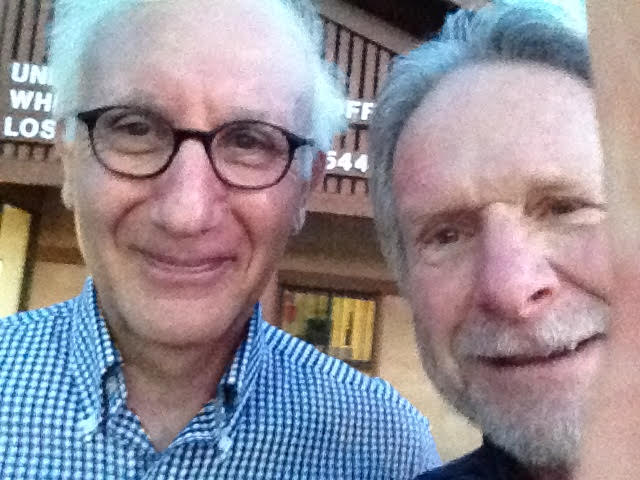
12. G.J. Maclay, P. Milonni, H. Fearn, “Of some theoretical significance: implications of Casimir effects,” European Journal of Physics 22, 463-469 (2001)
A great review of Casimir effects and vacuum energy, very readable, written in honor of Casimir’s death. Discusses the role of vacuum energy and Casimir forces in many areas, from the structure of the universe to microfabricated devices. Easy read for the nonspecialist.
11. G.J. Maclay, “An analysis of vacuum fluctuation energy and Casimir forces in conductive rectangular cavities,” Phys. Rev. A. 61, 052110 (2000).
Summarizes key ideas in vacuum energy calculations for geometries that are not just the old parallel plate geometry. Good discussion of the unexpected features of vacuum energy and vacuum forces in little metal boxes (what we call rectangular cavities), such as the possibility of inward forces on one side and outward forces or zero force on other sides. Nice figures.
10. G.J. Maclay, “A design manual for micromachines using Casimir forces: preliminary considerations,” PROCEEDINGS of STAIF-00 (Space Technology and Applications International Forum-2000, Albuquerque, NM, January, 1999), edited by M.S. El-Genk, AIP Conference Proceedings, American Institute of Physics, New York 2000. Published in hardcopy and CD-ROM by AIP.
This readable article talks about some simple ideas in the design of micromachines that are based on vacuum energy. It also points out the problems with some common ideas and why they don’t work.
9. G.J. Maclay, “Unusual properties of conductive rectangular cavities in the zero point electromagnetic field: Resolving Forward’s Casimir energy extraction cycle paradox,” PROCEEDINGS of STAIF-99 (Space Technology and Applications International Forum-1999, Albuquerque, NM, January, 1999), edited by M.S. El-Genk, AIP Conference Proceedings 458, American Institute of Physics, New York 1999. Published in hardcopy and CD-ROM by AIP.
This article presents the explanation of why Bob Forwards idea for extracting energy from the vacuum does not work. Usually we think that if the energy density in a box is greater than the energy density outside the box, that there will be an outward force on the walls of the box, which is what Bob’s idea was based on. However, for vacuum energy this it not true!
8. G.J. Maclay, C. Villarreal, “A model for Casimir Forces in closed cavities with finite conductivity,” presented at the symposium “Casimir Forces: Recent Results in experiment and theory,” Harvard-Cambridge Center for astrophysics, Harvard University, Cambridge, MA, Nov. 14, 2002. The talk is available online at ITAMP website: http://itamp.harvard.edu/itamp_online.html. This talk focuses on the large gap between the vacuum forces or Casimir forces theoreticians calculate and what experimentalists measure. Suggestions are made on ways to narrow the gap.
7. G.J. Maclay, J. Hammer, M. George, R. Ilic, Q. Leonard, R. Clark, “Measurement of repulsive quantum vacuum forces,” AIAA-2001-3359, AIAA/ASME/SAE/ASEE 37th Joint Propulsion Conference, Salt Lake City, 2001 Descriptions of experiments designed to measure repulsive forces.
6. G.J. Maclay, J. Hammer, “Vacuum forces in microcavities,” Seventh International Conference on Squeezed States and Uncertainty Relations, Boston, MA June 4-6, 2001, Proceedings available online at website: http://www.physics.umd.edu/robot Discussion of ideas about Casimir forces in small boxes and other structures.
5. G.J. Maclay, R. Ilic, M. Serry, P. Neuzil, “Use of AFM (Atomic Force Microscope) Methods to Measure Variations in Vacuum Energy Density and Vacuum Forces in Microfabricated Structures,” NASA Breakthrough Propulsion Workshop, Cleveland, Ohio, May, 1997.
4. F. Serry, P. Neuzil, R. Vilasuso, and G.J. Maclay, “Air Damping of Resonant AFM Micro-Cantilevers in the Presence of a Nearby Surface,” Proceedings of the Second International Symposium on Microstructures and Microfabricated Systems, pp 83-89, Chicago, IL, October, 1995.
3. L. St. Clair, G.J. Maclay, “Metal Microbridges to Investigate Quantum Forces,” Proceedings of the Winter Annual Meeting of the ASME, 9 pages, Chicago, II November, 6-11, 1994.
2. F. Serry, G.J. Maclay, “The Casimir Effect in a Model Microelectromechanical System,” Illinois Chapter of the AVS Annual Fall Meeting, Chicago, IL, September, 1993.
1. R. Mast, M. Serry, G.J. Maclay, “Measurement of Forces in Microcavities due to Quantum Fluctuations,” Prog. of 39th National Symposium of the American Vacuum Society, P. 323, Chicago, November 9-13, 1992.
G. J o r d a n M a c l a y – R e s e a r c h
Vacuum Fluctuations and Casimir forces
Quantum Vacuum / Breakthrough Propulsion Project NASA
Non Local Communications / Entangled States NASA
G. Jordan Maclay Patents and Papers
Quantum Fields LLC copyright 1999 – 2024
